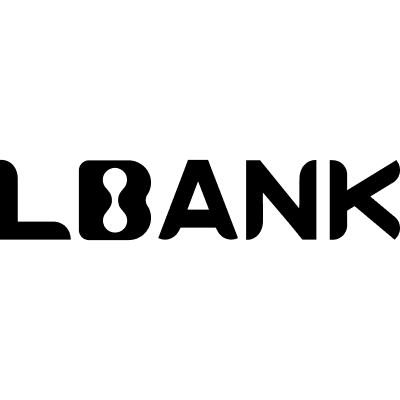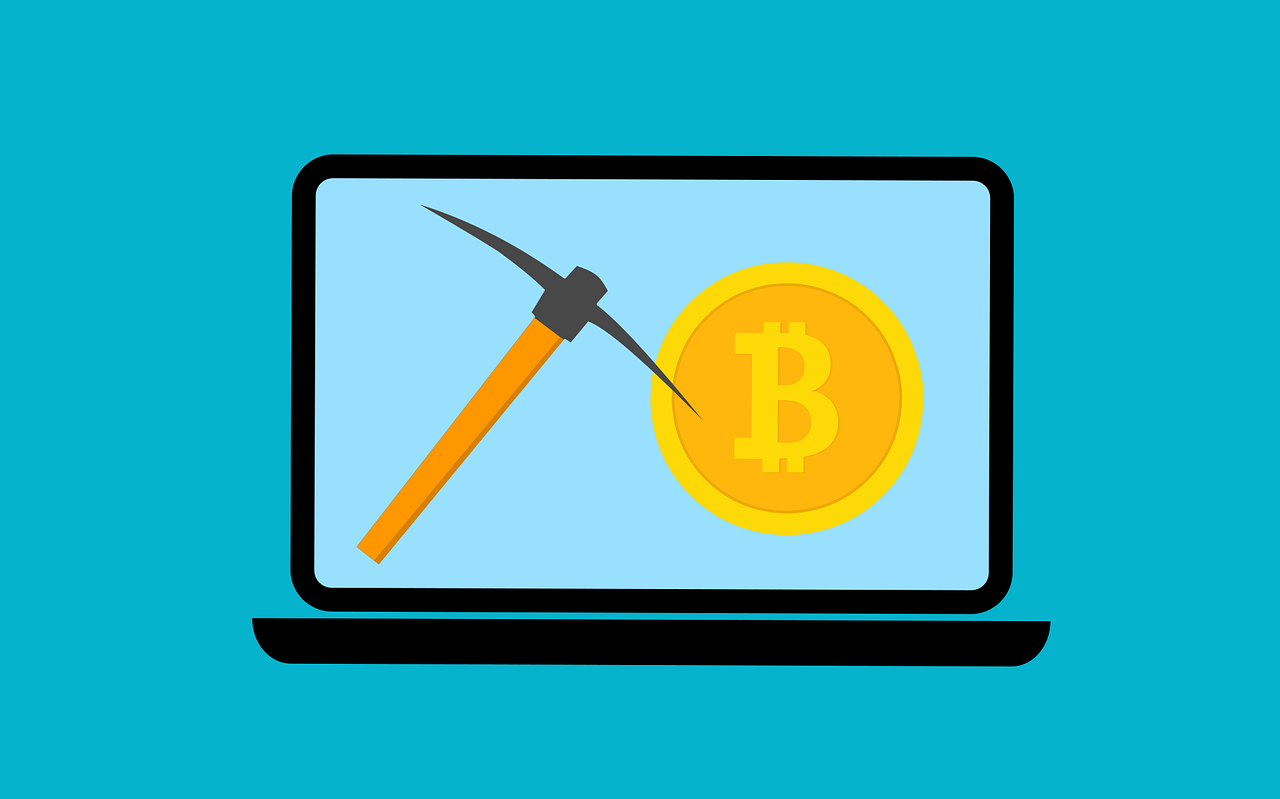– Ad –
| Getting your Trinity Audio player ready... |
Initial Exchange Offering (IEO) have become a prominent method for cryptocurrency projects to raise funds. Distinct from Initial Coin Offering (ICO), IEO are managed directly by cryptocurrency exchanges, providing a layer of trust and security that attracts both developers and investors. This guide delves into the intricacies of IEO, exploring their advantages, risks, and operational mechanisms, to provide a comprehensive understanding of this fundraising method.
Understanding IEOs
What is an Initial Exchange Offering?
An Initial Exchange Offering (IEO) is a fundraising event conducted on a cryptocurrency exchange’s platform. Unlike ICOs, where tokens are sold directly to the public by the project team, IEOs involve a third-party exchange that oversees the sale, ensuring a degree of security and trust for participants.
History and Evolution of IEOs
IEOs emerged as a response to the issues surrounding ICOs, such as fraud and regulatory concerns. The first notable IEO was conducted by Binance in 2017 for the Bread (BRD) token, setting a precedent for future projects. This model quickly gained popularity due to its structured approach and the credibility provided by established exchanges.
Difference Between IEOs and ICOs
While ICOs allow direct token sales from developers to investors, IEOs involve exchanges that vet and list the projects. This process reduces the risk for investors by leveraging the exchange’s reputation and compliance mechanisms. IEOs also typically require users to have an account with the exchange and comply with KYC regulations.
Key Players in an IEO Ecosystem
Key participants in an IEO include the token issuer (project team), the exchange hosting the IEO, and the investors. The exchange provides the infrastructure, marketing, and regulatory compliance, while the project team focuses on development and community engagement.
Mechanics of IEOs
How IEOs Work
Initial Exchange Offering (IEO) operate by leveraging the infrastructure of a cryptocurrency exchange to facilitate the sale and distribution of new tokens. The process typically involves the following steps:
- Project Proposal: The project team submits a proposal to the exchange, outlining the token’s purpose, technology, and business plan.
- Exchange Review: The exchange conducts due diligence to verify the project’s legitimacy, viability, and compliance with regulatory standards.
- IEO Agreement: If approved, an agreement is formed between the project team and the exchange, detailing the terms of the token sale.
- KYC/AML Compliance: Investors interested in participating must complete Know Your Customer (KYC) and Anti-Money Laundering (AML) procedures.
- Token Sale: The IEO takes place on the exchange, allowing verified investors to purchase the new tokens.
- Token Distribution: Tokens are distributed to investors through the exchange once the sale concludes.
This structured approach ensures a higher level of security and trust compared to traditional ICOs, as the exchange acts as an intermediary.
The Role of Exchanges in IEOs
Exchanges play a crucial role in the success and execution of an IEO:
- Due Diligence: Exchanges vet the project to ensure it meets legal and technical standards, providing a layer of security for investors.
- Technical Support: They manage the technical aspects of the token sale, including the platform, smart contracts, and integration with their trading systems.
- Compliance Management: Exchanges enforce compliance with KYC/AML regulations, reducing the risk of illicit activities.
- Marketing and Promotion: Exchanges promote the IEO through their established channels, increasing visibility and attracting potential investors.
- Post-Sale Support: They handle the listing and trading of the token post-IEO, ensuring liquidity and market accessibility.
Token Issuance Process
The token issuance process during an IEO involves several key stages:
- Smart Contract Deployment: The project team deploys a smart contract that defines the token’s characteristics and sale parameters.
- Pre-Sale Preparation: The exchange configures its platform to support the token sale, including integrating with the smart contract and setting up the user interface.
- Token Sale Launch: During the IEO, tokens are sold directly to participants through the exchange’s platform, often requiring payment in the exchange’s native cryptocurrency or a stablecoin.
- Sale Monitoring: Both the exchange and the project team monitor the sale in real-time to address any issues and ensure smooth execution.
- Distribution: After the sale concludes, tokens are distributed to participants’ exchange wallets based on their purchase amounts.
Listing and Trading Post-IEO
Following the IEO, the token is typically listed on the exchange for trading:
- Initial Listing: The token is listed on the exchange, making it available for trading against various pairs, usually including the exchange’s native token or major cryptocurrencies like Bitcoin and Ethereum.
- Market Making: Exchanges or designated market makers ensure liquidity by providing buy and sell orders, stabilizing the token’s price.
- Trading Support: The exchange offers ongoing trading support, including order matching, transaction processing, and customer support for any trading-related issues.
- Monitoring and Reporting: The exchange monitors trading activities and provides periodic reports to the project team, helping them understand market dynamics and investor sentiment.

Benefits of IEOs
Security and Trust
IEOs offer enhanced security and trust compared to ICOs:
- Exchange Due Diligence: Exchanges rigorously vet projects, ensuring they meet security and regulatory standards.
- KYC/AML Compliance: Mandatory KYC/AML checks prevent fraudulent activities and comply with legal requirements.
- Reputation Management: Reputable exchanges aim to protect their brand, adding a layer of trust to the IEO process.
- Fund Safety: Funds raised are typically held in secure accounts by the exchange, reducing the risk of misappropriation.
Simplified Token Launch
Launching a token through an IEO simplifies many aspects of the process:
- Technical Integration: The exchange handles the technical setup, including smart contract integration and platform configuration.
- Compliance Handling: Exchanges manage regulatory compliance, relieving the project team from navigating complex legal landscapes.
- User Base Access: The project gains immediate access to the exchange’s user base, facilitating a smoother and faster fundraising process.
- Post-Sale Services: Exchanges provide post-IEO support, including token listing and trading, ensuring ongoing market engagement.
Access to Exchange’s User Base
IEOs benefit from the exchange’s established user base:
- Immediate Exposure: Projects gain visibility to a large, active community of cryptocurrency traders.
- Increased Participation: The exchange’s user base often leads to higher participation rates and successful fundraises.
- Built-In Trust: Investors are more likely to participate in IEOs due to the trust they have in the exchange hosting the sale.
- Enhanced Liquidity: Immediate listing on the exchange ensures the token has liquidity from day one.
Marketing and Exposure
Exchanges actively promote IEOs, providing significant marketing advantages:
- Promotional Campaigns: Exchanges launch marketing campaigns through social media, newsletters, and their platforms to build hype around the IEO.
- Influencer Partnerships: Collaborations with influencers and industry experts can amplify reach and credibility.
- Community Engagement: Exchanges often facilitate community engagement through AMAs, webinars, and forums, increasing awareness and interest.
- Media Coverage: Successful IEOs attract media attention, further boosting the project’s visibility.
Risks and Challenges
Regulatory Risks
IEOs face various regulatory challenges:
- Compliance Requirements: Adhering to international KYC/AML regulations is mandatory but can be complex and resource-intensive.
- Securities Classification: Tokens might be classified as securities in some jurisdictions, requiring additional legal frameworks and registrations.
- Jurisdictional Variance: Regulatory environments differ globally, complicating compliance for IEOs operating in multiple regions.
- Future Changes: Evolving regulations can impact IEO practices and necessitate ongoing adjustments to remain compliant.
Exchange Centralization
Dependence on exchanges introduces centralization risks:
- Operational Control: Exchanges have significant control over the IEO process, including the timing, terms, and execution of the token sale.
- Security Dependence: The security of the IEO relies heavily on the exchange’s infrastructure, which may be vulnerable to hacks or operational failures.
- Fee Structures: Exchanges often charge substantial fees for hosting IEOs, affecting the overall funding amount received by the project.
- Platform Bias: There’s a risk of preferential treatment or bias towards projects that align with the exchange’s interests.
Project Viability
Not all projects are guaranteed success despite passing the exchange’s vetting process:
- Market Viability: Projects might struggle to achieve market adoption or meet their projected goals.
- Technological Risks: Potential issues with the underlying technology could impact the project’s success and token utility.
- Execution Risks: Failure to execute the business plan effectively can lead to project failure, affecting token value.
- Competition: Intense competition in the cryptocurrency market can limit a project’s growth potential.
Market Volatility
Cryptocurrency markets are inherently volatile, affecting IEOs:
- Price Fluctuations: Token prices can be highly volatile post-IEO, influenced by market sentiment, news, and overall crypto market trends.
- Liquidity Issues: Insufficient liquidity can lead to significant price swings and trading challenges.
- Investor Sentiment: Market sentiment can shift rapidly, impacting the success and perceived value of the token.
- Economic Factors: Broader economic conditions can influence investor behavior and market dynamics.
IEO Platforms and Exchanges
Leading IEO Platforms
Several platforms have established themselves as leaders in hosting IEOs:
- Binance Launchpad: Known for its rigorous vetting process and successful track record, Binance Launchpad offers significant exposure and liquidity.
- Huobi Prime: Provides comprehensive support, including marketing and technical assistance, to projects launching through its platform.
- OKEx Jumpstart: Focuses on helping innovative projects by providing a robust infrastructure and access to a large user base.
- Bitfinex Token Sales: Known for its transparency and support for high-quality projects, offering detailed due diligence and compliance processes.
Comparative Analysis of IEO Platforms
Comparing IEO platforms involves evaluating various factors:
- Reputation: Platforms like Binance and Huobi are well-regarded for their rigorous vetting and security measures.
- User Base: The size and engagement of the platform’s user base can significantly impact the IEO’s success.
- Support Services: The level of technical, marketing, and compliance support provided varies among platforms.
- Fee Structure: Platforms charge different fees for hosting IEOs, affecting the net proceeds for the project.
How to Choose the Right Platform
Choosing the right platform for an IEO depends on several considerations:
- Project Fit: Assess whether the platform’s user base aligns with the target audience for the token.
- Platform Reputation: Consider the platform’s reputation, security track record, and past IEO performance.
- Support Services: Evaluate the level of technical, marketing, and compliance support the platform offers. Some platforms provide extensive assistance with legal compliance, smart contract development, and community engagement.
- Fee Structure: Analyze the fees associated with the IEO. Platforms typically charge a combination of listing fees, commission on funds raised, and other service charges. Understanding the fee structure is crucial for budgeting and financial planning.
- Geographical Reach: Consider the platform’s geographical reach and regulatory compliance in different regions. Platforms with a global user base can provide broader exposure, but it’s essential to ensure they adhere to local regulations.
- Success Stories: Review case studies and success stories of previous IEOs hosted on the platform. This can provide insights into the platform’s effectiveness in delivering successful outcomes.
- User Experience: Examine the user experience for both the project team and investors. A seamless, user-friendly process can enhance participation and satisfaction.
Case Studies of Successful IEOs
- Matic Network (Now Polygon) on Binance Launchpad:
- Overview: Matic Network conducted its IEO on Binance Launchpad in April 2019. It aimed to provide scalable and instant blockchain transactions.
- Success Factors: The project benefited from Binance’s large user base and robust marketing. The IEO raised $5 million and quickly gained traction in the crypto community.
- Outcome: Polygon is now one of the leading layer-2 scaling solutions for Ethereum, with significant adoption and development.
- Celer Network on Binance Launchpad:
- Overview: Celer Network’s IEO on Binance Launchpad in March 2019 focused on scaling blockchain networks through off-chain scaling solutions.
- Success Factors: The extensive vetting by Binance and strategic marketing efforts contributed to the IEO’s success, raising $4 million.
- Outcome: Celer Network has developed a strong ecosystem, providing scalable and high-performance dApps and blockchain solutions.
- Harmony on Binance Launchpad:
- Overview: Harmony’s IEO took place on Binance Launchpad in May 2019. The project aimed to build a scalable and secure blockchain infrastructure.
- Success Factors: Harmony leveraged Binance’s reputation and resources, raising $5 million through the IEO.
- Outcome: Harmony has continued to grow, offering solutions for high-throughput and low-latency consensus in decentralized applications.
- Fetch.AI on Binance Launchpad:
- Overview: Fetch.AI conducted its IEO on Binance Launchpad in February 2019, focusing on building an AI-driven decentralized digital economy.
- Success Factors: The project’s innovative approach and Binance’s promotional efforts helped Fetch.AI raise $6 million.
- Outcome: Fetch.AI has developed a robust platform for autonomous agents, driving advancements in artificial intelligence and blockchain integration.
- BitTorrent on Binance Launchpad:
- Overview: BitTorrent’s IEO on Binance Launchpad in January 2019 aimed to integrate blockchain technology into its peer-to-peer file-sharing protocol.
- Success Factors: The established user base of BitTorrent and Binance’s promotional capabilities led to the IEO raising $7.2 million.
- Outcome: BitTorrent has successfully integrated blockchain technology, enhancing its ecosystem with decentralized services and incentives.
How to Participate in an IEO
Steps to Join an IEO
- Choose a Suitable Exchange: Select a cryptocurrency exchange known for hosting Initial Exchange Offerings (IEOs). Ensure the exchange is reputable, has a strong user base, and meets your regional regulatory requirements.
- Create an Account: Sign up for an account on the chosen exchange. This involves providing basic personal information, setting up a secure password, and enabling two-factor authentication for added security.
- Complete KYC/AML Verification: Undergo the Know Your Customer (KYC) and Anti-Money Laundering (AML) verification processes. Submit required identification documents to verify your identity and comply with regulatory standards.
- Fund Your Account: Deposit the necessary funds into your exchange account. IEOs usually require participation in a specific cryptocurrency (e.g., BTC, ETH, or the exchange’s native token). Ensure you have enough of the required token.
- Join the IEO: On the IEO launch day, access the IEO platform through the exchange. Follow the steps to purchase tokens, which may include specifying the amount you wish to invest and confirming the transaction.
- Receive Tokens: After successfully participating, the tokens will be distributed to your exchange account once the IEO concludes. These tokens can then be traded or held, depending on your investment strategy.
Required Documentation
- Identification: Provide a government-issued ID, such as a passport or driver’s license, for identity verification during the KYC process.
- Proof of Address: Submit documents like a utility bill or bank statement as proof of address, usually issued within the last three months.
- Source of Funds: Some exchanges may require you to declare the source of your funds, especially for large investments. This can include employment details, business income, or investment returns.
- Selfie Verification: You might need to upload a selfie holding your ID and a note with the current date to confirm your identity visually.
- Tax Information: Depending on the jurisdiction, you may be required to provide tax identification numbers or relevant tax documentation.
KYC and AML Compliance
- Know Your Customer (KYC): KYC involves verifying the identity of participants to prevent fraud, money laundering, and financing of terrorism. It typically includes submitting personal identification and proof of address.
- Anti-Money Laundering (AML): AML procedures aim to prevent money laundering activities by monitoring transactions and reporting suspicious activities. Exchanges must comply with AML regulations to ensure transparent and legal operations.
- Compliance Process: The compliance process usually includes document submission, identity verification, and sometimes additional information regarding the source of funds. This can take a few hours to several days.
- Legal Requirements: Compliance with KYC and AML laws is mandatory for exchanges to operate legally and for participants to legally join IEOs. Non-compliance can result in penalties or exclusion from participating in IEOs.
6.4 Tips for a Successful IEO Participation
- Research the Project: Thoroughly investigate the project behind the IEO. Read the whitepaper, evaluate the team, and understand the project’s goals, technology, and market potential.
- Check Exchange Reputation: Participate only in IEOs hosted by well-established exchanges with a proven track record. This reduces the risk of scams and ensures a smoother investment process.
- Prepare Early: Complete your account setup, KYC verification, and fund transfer well before the IEO starts. Popular IEOs can sell out quickly, so being prepared increases your chances of successful participation.
- Monitor IEO Announcements: Stay updated with official announcements and timelines from the exchange hosting the IEO. This includes the start time, token price, and any specific requirements for participation.
- Secure Your Investment: Use strong security measures for your exchange account, including two-factor authentication (2FA) and a secure password. Be cautious of phishing attempts and unauthorized access.
- Understand Token Economics: Review the token’s economic model, including supply, distribution, and use cases. Understanding how the token is integrated into the project can influence its future value and utility.
- Diversify Investments: Avoid putting all your funds into a single IEO. Diversify your investments across multiple projects to mitigate risk and enhance potential returns.
By following these steps and guidelines, you can navigate the complexities of participating in an IEO effectively, maximizing your chances of securing a worthwhile investment.
Launching an IEO
Criteria for Launching an IEO
Launching an IEO requires meeting specific criteria set by the exchange, which may include:
- Project Viability: Demonstrating a clear business model and use case.
- Team Background: Showcasing a skilled and experienced team.
- Compliance: Adhering to legal and regulatory requirements.
- Technical Readiness: Ensuring the technology and token are ready for deployment.
Preparing for an IEO
Preparation involves several key steps:
- Whitepaper Development: Craft a detailed whitepaper outlining the project’s vision, technology, and roadmap.
- Tokenomics: Define the token’s utility, supply, and distribution model.
- Legal Setup: Establish legal entities and compliance frameworks.
- Community Building: Engage with potential investors through social media, forums, and events.
Marketing and Outreach
Effective marketing is crucial for a successful IEO:
- Press Releases: Distribute announcements through industry media.
- Influencer Partnerships: Collaborate with influencers to reach a broader audience.
- Social Media Campaigns: Use platforms like Twitter, Telegram, and LinkedIn to build hype and inform potential investors.
- Bounty Programs: Offer rewards for community members who promote the IEO.
Post-IEO Strategies
Post-IEO, focus on:
- Token Utility: Ensure the token has practical use within the ecosystem.
- Continuous Development: Adhere to the project roadmap and deliver updates.
- Community Engagement: Maintain open communication with investors and supporters.
- Exchange Listings: Seek additional exchange listings to increase token liquidity and accessibility.
Regulatory Landscape
Global Regulatory Environment
The regulatory environment for IEOs varies globally:
- United States: IEOs may be subject to securities regulations enforced by the SEC.
- Europe: IEOs often need to comply with the EU’s anti-money laundering directives and financial regulations.
- Asia: Regulations in countries like Singapore and Japan are more accommodating but still require compliance with financial and securities laws.
Compliance Requirements
IEO projects must adhere to various compliance requirements, including:
- KYC/AML Regulations: Mandatory identity verification for participants.
- Securities Laws: Ensuring tokens are not classified as securities unless properly registered.
- Data Protection: Complying with data protection laws such as GDPR in Europe.
Legal Considerations
Legal considerations involve:
- Jurisdictional Compliance: Adhering to laws in all jurisdictions where tokens will be sold.
- Tax Implications: Understanding the tax obligations for both the project and investors.
- Intellectual Property: Protecting the project’s intellectual property through patents or trademarks.
Future of IEO Regulations
Future regulations are likely to focus on enhancing transparency and investor protection while fostering innovation. Projects should stay informed about regulatory changes to ensure ongoing compliance.
Investor Considerations
Due Diligence
Investors should perform thorough due diligence by:
- Evaluating the Team: Assessing the team’s background and expertise.
- Analyzing the Whitepaper: Reviewing the project’s whitepaper for clarity and feasibility.
- Checking Partnerships: Verifying the legitimacy of claimed partnerships and collaborations.
Evaluating Projects
Evaluation should consider:
- Technology: Assessing the technology’s viability and innovation.
- Market Potential: Understanding the market need and competition.
- Roadmap Realism: Evaluating the feasibility of the project’s roadmap and milestones.
Risk Management
Effective risk management involves:
- Diversification: Avoiding putting all funds into a single IEO.
- Setting Limits: Determining investment limits based on risk tolerance.
- Staying Informed: Keeping up with market trends and project updates.
Legal and Tax Implications
Investors should be aware of:
- Tax Obligations: Understanding the tax implications of IEO investments, which vary by jurisdiction.
- Legal Risks: Recognizing potential legal risks associated with investing in unregulated markets.
Future of IEOs
Emerging Trends
- Increased Regulatory Oversight: As governments and regulatory bodies gain a better understanding of IEOs, expect more defined regulations to ensure compliance and protect investors.
- Integration with Decentralized Finance (DeFi): IEOs may integrate with DeFi platforms to offer decentralized exchange features, providing more autonomy and security for token issuances.
- Hybrid IEO Models: Combining features of IEOs with other fundraising methods like Security Token Offerings (STOs) and Initial DEX Offerings (IDOs) to create more versatile and compliant fundraising mechanisms.
- Focus on Sustainable Projects: A shift towards funding environmentally and socially responsible projects as part of broader trends in sustainable and ethical investing.
- Enhanced Investor Education: Platforms will likely increase efforts to educate investors about the risks and benefits of participating in IEOs, contributing to more informed decision-making.
Impact on the Cryptocurrency Market
- Market Maturity: IEOs contribute to the maturation of the cryptocurrency market by introducing more structured and regulated fundraising processes.
- Liquidity and Trading Volume: IEOs boost liquidity and trading volume on exchanges as newly issued tokens are immediately available for trading post-sale.
- Innovation Funding: By providing a streamlined fundraising method, IEOs facilitate the development of innovative blockchain projects, driving technological advancements in the industry.
- Increased Trust: The involvement of exchanges in the token sale process enhances investor trust, potentially attracting more traditional investors to the cryptocurrency market.
Predictions for the Next Decade
- Mainstream Adoption: IEOs will likely become a standard method for blockchain projects to raise capital, alongside other traditional and crypto-native methods.
- Global Standardization: As regulations become more consistent across jurisdictions, IEOs will operate under unified international standards, simplifying compliance and cross-border participation.
- Technological Advancements: Continuous improvements in blockchain technology and smart contracts will enhance the efficiency, security, and transparency of IEOs.
- Diverse Investment Opportunities: More varied and niche projects will use IEOs, expanding beyond typical blockchain applications to sectors like healthcare, supply chain, and entertainment.
- Decentralized Platforms: Growth in decentralized platforms may reduce reliance on centralized exchanges, leading to the rise of more decentralized token issuance models.
Technological Innovations
- Improved Smart Contracts: Advanced smart contract functionalities will enable more sophisticated and secure token sale mechanisms, including dynamic pricing and automated compliance checks.
- Enhanced Security Protocols: Innovations in blockchain security will provide stronger safeguards against hacking and fraud, protecting both investors and projects.
- AI and Machine Learning Integration: AI and machine learning can be used to analyze investor behavior, optimize marketing strategies, and detect fraudulent activities in real-time.
- Interoperability Solutions: Development of cross-chain interoperability will allow IEOs to be conducted across multiple blockchain platforms, increasing accessibility and participation.
- Decentralized Identity Verification: Blockchain-based identity verification systems will streamline KYC/AML processes, making compliance more efficient and user-friendly.
Conclusion
Initial Exchange Offerings (IEOs) have emerged as a transformative mechanism in the realm of cryptocurrency fundraising, offering a structured and secure method for blockchain projects to raise capital while providing investors with vetted opportunities. Through the participation of cryptocurrency exchanges in the token issuance process, IEOs mitigate some of the risks associated with traditional Initial Coin Offerings (ICOs), such as fraud and lack of due diligence, by introducing enhanced security measures, regulatory compliance, and market exposure.
IEOs benefit from the trust and credibility that established exchanges bring, simplifying the token launch process and granting immediate access to a broad user base. This, coupled with the marketing support from exchanges, provides projects with significant visibility, potentially accelerating their adoption and success. However, like all investment opportunities, IEOs come with their own set of challenges, including regulatory risks, exchange centralization, and market volatility. Prospective participants must conduct thorough research, ensure compliance with KYC and AML requirements, and stay informed about the project’s fundamentals and market dynamics.
The future of IEOs looks promising, with trends pointing towards increased regulatory oversight, integration with decentralized finance, and advancements in blockchain technology that will continue to shape and refine the IEO landscape. As the cryptocurrency market evolves, IEOs are expected to remain a key fundraising tool, offering both innovative projects and investors a reliable platform for growth and investment.
Ultimately, understanding the intricacies of IEOs—how they function, their benefits, risks, and the platforms that support them—equips investors and blockchain entrepreneurs with the knowledge needed to navigate this dynamic and evolving space. As with any investment, due diligence, risk management, and strategic planning are essential to maximizing the potential benefits and minimizing the risks associated with Initial Exchange Offerings.
FAQs
What are the main differences between ICO, STO, and IEO?
ICOs (Initial Coin Offerings): Fundraising is conducted directly by the project team without an intermediary. They are less regulated and offer greater flexibility but come with higher risks due to lack of oversight.
STOs (Security Token Offerings): Tokens represent ownership in an asset or company and must comply with securities regulations. They offer more regulatory protection but involve complex compliance requirements.
IEOs (Initial Exchange Offerings): Conducted on a cryptocurrency exchange, providing additional security and trust. The exchange manages compliance, token sale, and listing, reducing the burden on the project team.
How can I identify a reliable IEO platform?
Reputation: Look for platforms with a strong reputation and track record of successful IEOs. Established exchanges like Binance and Huobi are often more reliable.
Regulatory Compliance: Ensure the platform complies with relevant KYC/AML regulations and has a clear legal framework for conducting IEOs.
Security Measures: Evaluate the platform’s security protocols, including fund protection, smart contract auditing, and user data security.
User Reviews: Check user reviews and feedback to gauge the platform’s performance, reliability, and customer support.
Support Services: Choose platforms that offer comprehensive support, including technical assistance, marketing, and legal compliance.
What are the common pitfalls in participating in IEO?
Lack of Due Diligence: Failing to thoroughly research the project and its team can lead to investments in non-viable or fraudulent ventures.
Over-Reliance on Exchange Vetting: Assuming that all vetted projects are inherently safe can be misleading. Investors should conduct their own research.
Market Volatility: Cryptocurrencies are volatile, and token prices can fluctuate significantly post-IEO, potentially leading to losses.
Regulatory Risks: Changes in regulations can impact the legality and profitability of the investment, especially in jurisdictions with strict crypto laws.
Technical Issues: Participation in IEOs can be affected by technical problems like platform crashes or slow transaction processing, leading to missed investment opportunities.
How do regulations affect IEOs?
Compliance Requirements: IEOs must adhere to regulatory standards such as KYC/AML procedures, ensuring that participants are properly verified and funds are clean.
Securities Laws: Depending on the jurisdiction, tokens sold in IEOs might be classified as securities, requiring compliance with specific securities regulations and disclosures.
Jurisdictional Differences: Different countries have varying regulations for cryptocurrency fundraising, affecting the global accessibility and structuring of IEOs.
Regulatory Evolution: As regulations evolve, IEOs must adapt to new legal frameworks, which can affect the process, timing, and costs of conducting an IEO.
Investor Protection: Regulations aim to protect investors from fraud and mismanagement, but they also introduce additional compliance costs and complexities for project teams.

















